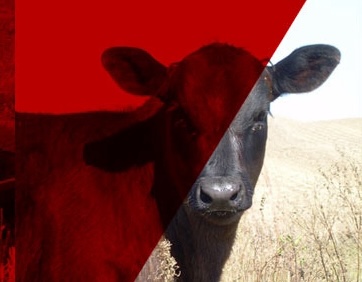Accurate forage testing starts with how you collect the sample.
- Grab samples only represent the quality of about one square foot in the field, which does not capture the natural variability across a hay lot.
- Quality can vary not only from bale to bale, but also within a single bale, with outer layers often differing from the interior.
Using a hay probe is the only way to obtain a sample that represents the whole lot. By coring into the bale and sampling at least 20 different bales, you collect material that best represents the variation across the field. Combined, these cores should total about ½ pound of forage, providing a reliable sample for testing.
Key Features for a Hay Probe
While many acceptable probes are available, they differ in design, ease of use, and durability. Below are key features to consider when selecting a probe:
- Length of the Probe- Select a probe 14–24 inches long so you reach well into the bale and sample all layers. Shorter probes risk under-sampling the bale’s interior.
- Diameter of the Tube- A tube diameter of 3/8 to 5/8 inch works well. Smaller tubes don’t collect enough material, while larger ones can be difficult to push into dense bales.
- Cutting Edge Design- Look for a sharp, hardened, or serrated tip. Blunt or dull edges compress or shred hay, skewing results toward leafy portions. Probes with replaceable or sharpenable tips are best for long-term use.
- Sample Collection System- A collection canister or side window makes it easier to empty cores into a sample bag. Avoid probes that require emptying out material each time, they slow the process and may lead to under sampling when fatigue sets in.
- Power Source- For sampling one lot, hand-driven probes are adequate. Hand-driven probes are simple, reliable, and always ready. For multiple hay lots, probes that attach to a drill can save time and energy, again reducing the risk of under-sampling.
Hay Probes for Sale
This list is not exhaustive and is provided for reference only; inclusion does not imply endorsement nor does omission imply disparagement.
- AMS Hay & Forage Probe
- Phone: (800) 635-7330
- Direct Link to Hay & Forage Probes: https://www.ams-samplers.com/hay-sampling/
- Best Harvest Hay Sampler Probe
- Phone: 888-947-6226
- Direct Link to Hay & Forage Probes: http://www.bestharveststore.com/Hay-Probe-Samplers-c10
- Colorado Hay Probe
- Phone: (970) 482-2060
- Website: http://www.udyone.com/hayprobeinfo.htm
- Oakfield Probe
- Phone: (920) 583-4114
- Direct Link to Hay & Forage Probes: https://www.soilsamplers.com/collections/hay-samplers
- Penn State Hay Probe
- Phone: 607-252-7540
- Direct Link to Hay & Forage Probes: https://dairyone.com/shop/penn-state-hay-probe-w-drill-adapter/
- Sierra Hay Probe
- Phone: (209) 333-3337
- Direct Link to Hay & Forage Probes: https://www.sierratestingservice.com/hay-probes
- Star Forage Probe
- Phone: (403) 471-0097
- Direct Link to Hay & Forage Probes: https://starqualitysamplers.com/forage-samplers/
- Yankton Hay Probe (Frontier Mills)
- Phone (605) 665-2441
- https://frontiermills.com/

